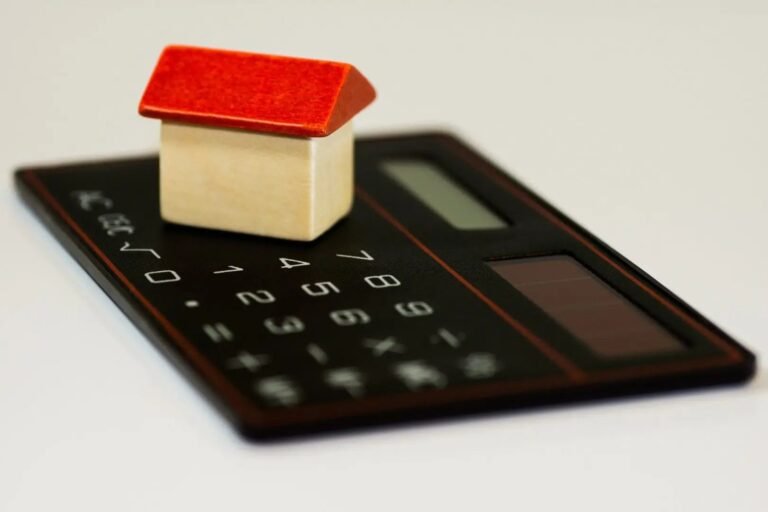The UK government imposes Stamp Duty Land Tax (SDLT) on the acquisition of land and properties over a specified threshold value.
SDLT is a crucial aspect of property transactions, often representing a significant expense for buyers. However, many may not realise it's possible to obtain a refund on SDLT under certain circumstances.
In this guide, we will explore the complexities of SDLT refunds, covering everything from determining eligibility to navigating the application procedure.
Who is liable for Stamp Duty?
The Purchaser is subject to Stamp Duty Land Tax (SDLT) when purchasing or transferring residential, non-residential, or mixed-use property.
The rate of stamp duty varies from 2% to 17% based on factors such as the property's value, the date of purchase, the buyer's property holding status, and their residential status.
Our guide on SDLT explores this in detail "A Complete Guide on Stamp Duty Land Tax " Read Now!
Unlocking Stamp Duty Refunds
Stamp duty refunds offer a lifeline for those who've overpaid in specific property scenarios.
These refunds can provide relief to those who may have overpaid due to certain circumstances, such as changes in property transactions or eligibility criteria.
Stamp duty rates can be complex, with rates varying based on factors such as the type and value of the property. Even a minor miscalculation can lead to significant overpayments.

Stamp Duty Refund Eligibility
To qualify for an SDLT refund, buyers must meet criteria provided by law to claim the specific exemption or relief. These relief and exemptions may include the purchase of an uninhabitable property, multiple dwellings, first time buyer, replacement of only or main residence among others.
Things to keep in mind while considering eligibility criteria for SDLT.
- Availability of reliefs and exemptions: Find the right exemption or relief and then apply it correctly to your property purchase.
- Time limit: You've got 12 months from your SDLT filing date to make any amendments. In certain circumstances, it might be availed for 36 months.
- Necessary documents: Make sure you've got all the paperwork to back up your claim.
Remember:
Diligent preparation and having the right documents are crucial to prevent rejection. If you want to avoid the chance of rejection, don't hesitate to seek expert guidance to navigate the process smoothly.
Stamp Duty Refund through Multiple Dwellings Relief
A refund for overpaid stamp duty may be within reach if you've purchased multiple dwellings during your property transaction.
The purchase of multiple dwellings enables you to claim Multiple Dwellings Relief (MDR). Should there have been a miscalculation, failure to claim MDR at the time of SDLT return, or an incorrect assessment of one or more properties, you might be able to reclaim the overpaid tax amount.
Learn more about Multiple Dwellings Relief in our Multiple Dwellings Relief (MDR) - A Complete Guide!
|
|
|
Amount
|
|---|---|---|
|
Up to first £250,000 (Threshold: £250,000)
|
0%
|
|
|
Next £675,000 (Threshold: £925,000)
|
5%
|
|
|
SDLT payable on two dwellings
|
|
£12,375
|
|
Total SDLT payable with MDR Relief
|
|
|
|
SDLT paid without MDR Relief
|
|
|
|
Repayment due/Savings after claiming MDR
|
|
Example 1 :
Sam purchased his initial property, which comprises two dwellings, for a total of £995,000. His payment for Stamp Duty Land Tax (SDLT) without opting for MDR amounted to £40,750.
Later, Sam explores the option of claiming MDR to potentially reduce his tax liability. Here is the calculation.
| ||
|---|---|---|
Up to first £250,000 (Threshold: £250,000) | 0% | - |
Next £675,000 (Threshold: £925,000) | 5% | £12,375 |
SDLT payable on two dwellings | £12,375 | |
Total SDLT payable with MDR Relief | £24,750 | |
SDLT paid without MDR Relief | £40,750 | |
Repayment due/Savings after claiming MDR | £16,000 |
Here Sam is eligible to claim SDLT refund of £16,000.
To determine your Eligibility, check out our User-Friendly Multiple Dwellings Relief (MDR) Calculator!
Stamp Duty Refund on Second Home (Replacement of the only or main residence)
Have you incurred the additional 3% surcharge for acquiring a new property and considered selling your main home after buying a new one? Good news! You can still get a stamp duty refund for the second home surcharge. Here's how:
You are eligible to apply for an SDLT refund if you have sold your previous main residence within three years of purchasing the new property.
Example 2 :
Nick bought his second residential property on October 22, 2022, for £275,000. Upon purchasing the property, he was required to pay £9,500 in taxes.
Later, on January 31, 2023, Nick sold his main residence. As a result of this sale, he became eligible to claim a refund of £8,250.
In special cases: If you bought a new home and couldn't sell your old home within 3 years due to reasons beyond your control, you may still claim a refund. Some reasons may include:
- the impact of coronavirus (COVID-19) preventing the sale
- an action taken by a public authority preventing the sale
Claiming a refund for the "3% Stamp Duty Land Tax (SDLT) Surcharge". Explore further insights in our comprehensive guide!
Stamp Duty Refund for Uninhabitable Property

Uninhabitable properties also known as derelict properties, plagued by unhealthy conditions or structural damage, pose unique challenges for property investors. However, they also offer opportunities for savvy investors looking to renovate and profit from their investments.
Explore our detailed guide on "Stamp Duty implications on uninhabitable properties" understand comprehensively!
SDLT refunds may be applicable when acquiring a property initially deemed uninhabitable.
A landmark legal ruling in the case of P N Bewley Ltd v HMRC [2019] UKFTT 65 (TC) has clarified that properties not fit for habitation at the time of purchase do not fall under the 'dwelling' definition, thus non-residential rates apply to the property.
Further, Non-residential rates are quite lower than the residential rates thereby resulting in substantial SDLT savings.
Example 3 :
Harry purchased the second property for £600,000 which is not suitable for a dwelling.
Due to his lack of awareness regarding SDLT rates, Harry mistakenly paid SDLT at the residential rates.
SDLT at residential rates | SDLT at Non-residential rates |
|---|---|
3% 0n the first £250,000 = £7500 | 0% On the first £150,000 = 0 |
8% 0n the next £350,000 = £28,000 | 2% on the next £100,000 = £2,000 |
5% on the remaining £350,000 = £17,500 | |
Total SDLT = £35,500 | Total SDLT = £19,500 |
Upon claiming derelict relief for uninhabitable property his liability is reduced to £19,500, resulting in eligibility to claim a refund of £16,000.
SDLT Refund for Non-UK Residents
Non-UK residents are subject to a 2% additional surcharge in all reliefs and exemptions.
Did you know that non-UK residents who have lived in the UK for at least 183 days within a consecutive 365-day period may be eligible for a refund on the 2% extra surcharge they paid?
In the realm of property transactions, non-UK residents may seek reimbursement of the surcharge paid, provided they have resided in the UK for a cumulative period of 183 days within a consecutive 365-day timeframe.
- Starting up to 364 days before the effective date of the transaction.
- Ending up to 365 days after the effective date of the transaction.
Example 4 :
Here's a comparison of Stamp Duty Land Tax (SDLT) for resident and non-resident first-time buyers when purchasing a property valued at £600,000.
For residents | For Non-residents |
|---|---|
0% on the first £425,000 = 0 | 2% on the first £425,000 = £8,500 |
5% on the remaining £175,000 = £8,750 | 5% on the remaining £175,000 = £12,250 |
Total SDLT = £8,750 | Total SDLT = £20,750 |
Meeting the requirement of being present for 183 days within a 365-day timeframe in the UK, either 364 days before or 365 days following the transaction's effective date, will make you eligible to claim a refund of £12,000.
Usually, the effective date is the completion date of the transaction.
You must apply for repayment within two years of the transaction's effective date.
Stamp Duty Refund on properties with an Annexe
Have you ever felt like you've paid too much in stamp duty? If your property includes an annexe, granny flat, or a similar smaller structure suitable for use, you might have overpaid without even realising it.
But here's the good news: thanks to a rule change in 2018, properties with self-contained annexes are now classified as single dwellings. You could be entitled to a significant refund if the main building makes up at least two-thirds of the property's total value.
Even if you don't meet the above-mentioned criteria, you're still eligible to claim Multiple Dwellings Relief for your property with the annexe.
MULTIPLE DWELLINGS RELIEF: GRANNY ANNEXES AND SEPARATE DWELLINGS
Example 5 :
When you purchase a second home for £1 million. The property has a separate annexe valued at £350,000 on its own.
If you opt not to claim Multiple Dwellings Relief (MDR), you will incur Stamp Duty Land Tax (SDLT) based on the total property price, resulting in a payment of £71,250.
However, if the annexe qualifies as a separate dwelling, the SDLT payable would be £55,000. By utilising MDR Relief, you can save £16,250.
If your property meets these above criteria and was purchased after the rule change, don't miss out on the chance to reclaim what's rightfully yours! Keep reading for step-by-step procedures to seize this opportunity.
Stamp Duty Refund through Group Relief

Discover the potential for reclaiming Stamp Duty Land Tax when transferring land and buildings within a group of companies. This relief allow groups to move property for commercial reasons without considering Stamp Duty Land Tax implications.
To qualify as members of the same group of companies, one company must own at least 75% of the share capital of the other company, or a third company should own at least 75% of the share capital of both the buyer and the seller.
SDLT GROUP RELIEF CLAIM: REDUCE YOUR SDLT LIABILITY!
If you've recently transferred land and buildings within a group of companies, there's a chance you've paid stamp duty. But fear not! You can seek a refund and possibly recover those overpaid amounts.
Stamp Duty Refund on mixed-use property
Exciting news! HMRC has updated its Stamp Duty Land Tax (SDLT) guidelines for mixed-use properties.
Properties with non-residential usage are taxed at non-residential rates, regardless of the proportions of residential and non-residential areas.
Although, applying the non-residential rates on the mixed property is often considered beneficial but it is not always the case. Let’s understand with an example below.
Example 6 :
When a property is purchased with a commercial shop on the ground floor with residential flats on the floors above.
The purchase price is £1,165,000 which is split £250,000 for the shop and £915,000 for three self-contained flats.
Under the non-residential rates, the Stamp Duty Land Tax (SDLT) liability amounts to £47,750.
0% on the first £150,000=0
2% on the next £100,000=£2,000
5% on the remaining 915,000=£45,750
Total SDLT=£47,750
HMRC also has clarified that the additional 3% SDLT surcharge won't apply if you claim Multiple Dwellings Relief (MDR). MDR can be claimed when you acquire multiple dwellings in a single transaction or mixed-use purchases involving more than one dwelling. However, in the case of mixed-use property MDR is only available to the residential part.
Applying MDR on the residential part and applying non-residential rates for the commercial part
For Shop
0% on the first £150,000=0
2% on the next £100,000= £2,000
Total SDLT =£2,000
Applying MDR to the remaining £915,000 residential part would result in an SDLT of £28,200.
So, the total SDLT on this property is £30,200. This will result in saving of £17,550.
This change represents a significant shift from HMRC's previous stance. If you've been affected by overpaid SDLT on transactions involving mixed-use properties and SDLT multiple dwellings, you may now seek reimbursement from HMRC.
Explore intricate details about SDLT on Mixed use of property "Stamp Duty on Mixed Use Property" Read Now!
How to Apply for Stamp Duty Refund
Once you've determined your eligibility to reclaim the overpaid SDLT, you can proceed with the application process.
It is crucial to ensure that all the information provided is accurate and complete to avoid rejections and refund delays.
Submission Options: You can submit your Stamp Duty Refund claim using your government gateway account online.
Alternatively, there's a postal option where you can fill in the form onscreen, print it off, and mail it to HMRC.
Checklist for SDLT tax return refund

Make sure you have all the necessary information handy, including:
- Your personal information
- Purchase date of property
- SDLT return UTR Number
- Information of primary purchaser if it differs from your information about the property that incurred higher SDLT rates
- Details of your previously owned main residence, including address and sale date
- Name of the buyer of the previously owned main residence and the sum of tax paid on that property that incurred higher SDLT rates (SDLT1 return)
- Explanation for the overpayment of SDLT
- Sum of tax you are seeking to be reimbursed (SDLT calculation workings)
- Authorisation letter for agent and bank transfer
- Copy of original SDLT return
- The relevant transfer document (Completion statement, TR1, and floorplan), the lease, or similar document that proves that the transaction was affected
- Recipient bank account number, account name, and sort code
The above list is not exhaustive and might change as per the SDLT refund you are claiming.
How long does a Stamp Duty Refund take?
Once you've submitted all the necessary information to HMRC will receive a response within 4 to 8 weeks, notifying you about the status of your rebate.
However, this process may be extended if HMRC requires additional information for your claim. You will receive your refund shortly after the approval of an application for refund.
Conclusion
In conclusion, navigating the world of stamp duty refunds can be complex, but armed with the right knowledge and resources, reclaiming overpaid taxes is within reach.
From understanding eligibility criteria to gathering necessary documents and submitting your claim, each step is crucial in ensuring a smooth and successful refund process.
Whether you're seeking reimbursement for a second home, uninhabitable property, or mixed-use investment, exploring your options, and staying informed is key. Remember, accuracy and completeness are paramount to avoid rejections and delays.









